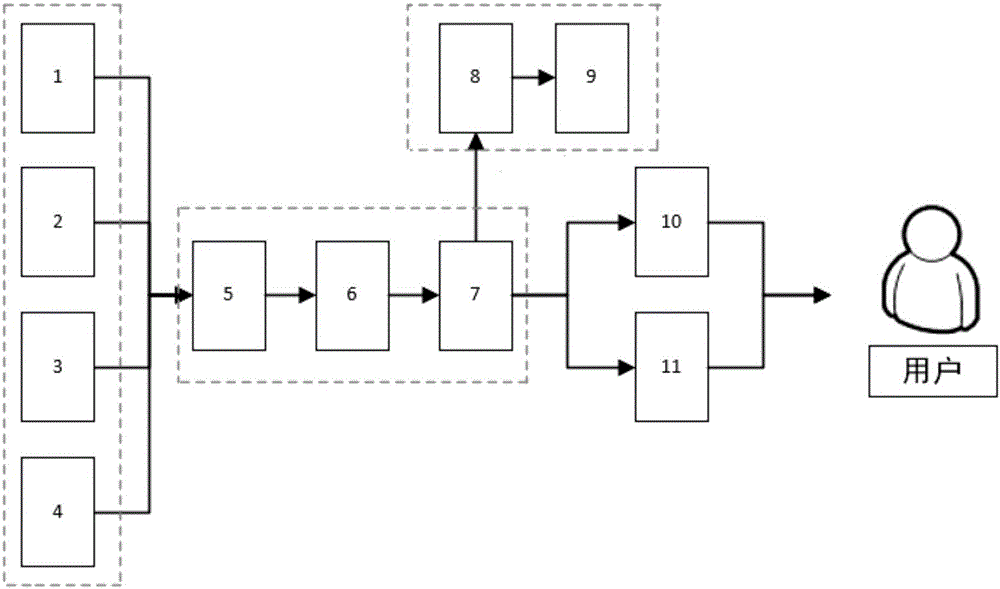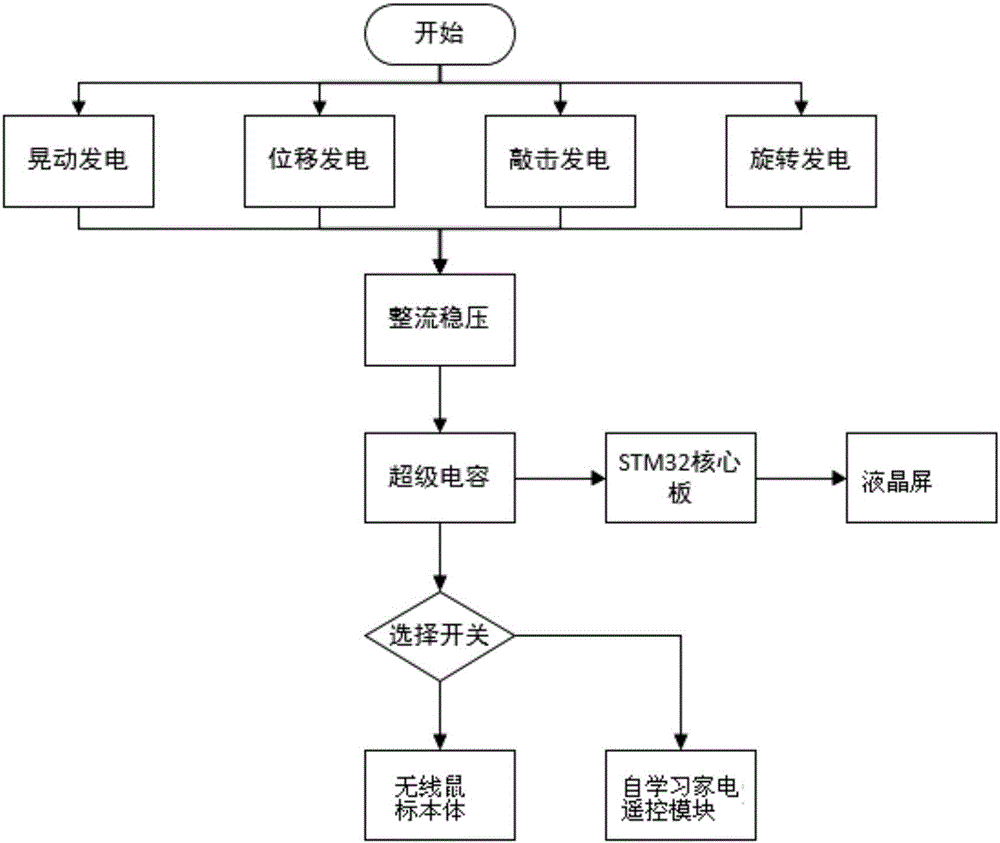Electromagnetic induction principle based self-chargingwireless mouse and charging method
A wireless mouse and electromagnetic induction technology, applied in battery circuit devices, electrical digital data processing, input/output process of data processing, etc., can solve the problems of insufficient power, inability to save power, single charging method of the mouse, etc., and achieve portability Strong and stable effect
- Summary
- Abstract
- Description
- Claims
- Application Information
AI Technical Summary
Problems solved by technology
Method used
Image
Examples
Embodiment
[0029] Such as figure 1 and figure 2 As shown, a self-charging wireless mouse based on the principle of electromagnetic induction includes a wireless mouse body 10, a multi-channel power generation module, an energy storage module, a selection switch, a self-learning home appliance remote control module 11, and a power display module. The multi-channel power generation module Connect with the energy storage module, the energy storage module is respectively connected with the power display module and the wireless mouse body, and the multi-channel power generation module includes one of the shaking power generation unit 1, the displacement power generation unit 2, the percussion power generation unit 3 and the rotation power generation unit 4 more than one species.
[0030] The shaking generating unit is composed of a first powerful magnet and a first generating coil built into the wireless mouse body;
[0031] The displacement generating unit is composed of a second generati...
PUM
 Login to View More
Login to View More Abstract
Description
Claims
Application Information
 Login to View More
Login to View More - R&D
- Intellectual Property
- Life Sciences
- Materials
- Tech Scout
- Unparalleled Data Quality
- Higher Quality Content
- 60% Fewer Hallucinations
Browse by: Latest US Patents, China's latest patents, Technical Efficacy Thesaurus, Application Domain, Technology Topic, Popular Technical Reports.
© 2025 PatSnap. All rights reserved.Legal|Privacy policy|Modern Slavery Act Transparency Statement|Sitemap|About US| Contact US: help@patsnap.com


